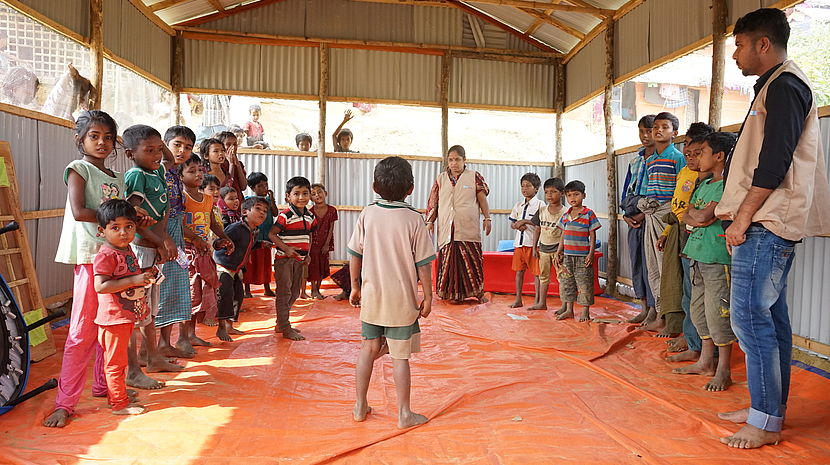Manish's Story

Since the earthquake that hit Nepal on the 25h April 2015, CBM, with partner organisations, have been working to ensure that everyone in the affected communities - including persons with disabilities - benefit from and participate in relief and recovery work. One year on, these efforts have reached more than 25,000 people in the worst hit districts.
Manish's Story
Manish Prasai from National Federation of Disabled Nepal shares with us his ordeal during the Nepal Earthquake.
“We first had to save ourselves as we were all directly affected by the earthquake,” says Manish Prasai, Administrative Manager of the National Federation of Disabled Nepal (NFDN). NFDN is a national umbrella organization representing more than 300 Disabled People’s Organisations (DPOs) across all five regions of Nepal.
“Once we could organise ourselves again in Kathmandu we started to try to contact our members, says Manish. It was chaotic, phone lines were down and communication was very difficult. Step by step we got information about the situation and many of our members told us about the difficulties they faced in accessing information about relief and distribution; there were so many terrible stories about destroyed homes, displacement and death and our members losing their assistive devices”.
In Nepal, the rights of persons with disabilities are not very high on the agenda of the government or the public services, and thus they still face stigma and discrimination, which will be reflected during an emergency response. This also implies that many persons with disabilities had not received proper preparedness information, nor had they taken part in emergency training or received information on how to protect their own lives in case of an earthquake.
“Our very first response was to contact the national radio channel. We didn’t know exactly what to do, but we thought that it was important to send out information via radio where we requested all emergency responders to make sure that all ‘at risk’ groups, including of course persons with disabilities, also get immediate support. We also developed a rapid assessment questionnaire to make a quick survey among our members, to have a better idea of their needs”.
Four days after the disaster, NFDN succeeded in arranging a first meeting with a number of humanitarian organisations, among them CBM, and proposed a partnership to address the inclusion of persons with disabilities in the emergency response. CBM immediately accepted the proposal and together the two organisations worked out a strategy to provide support in three of the most affected districts and at the same time set up Ageing and Disability Focal Points.
“As this situation was new to NFDN and its members, CBM provided us with excellent information from their previous experiences, such as the Philippines and Haiti.”
The main objectives of CBM and NFDN’s collaboration were:
- to collect and analyse information about persons with disabilities in the three districts;
- to identify their needs and categorise and classify them in order to be able to link people with appropriate and available services and refer those that needed more specific services; and
- to set up referral mechanisms and district Focal Persons who could participate in cluster meetings.
Through the Ageing and Disability Focal Points, more than 3500 persons with disabilities and older people were identified and supported and more than 1000 were successfully referred to needed relief, such as food, shelter or medical attention.
“Many of the UN agencies and also the Nepalese government were not properly sensitised on disability. Our own thinking has also changed: disaster preparedness can no longer be an optional issue! All groups in society and individuals should have an emergency plan and a basic understanding of disaster and preparedness in order to react and respond safely. Finally, we also saw several positive outcomes at the end of this 10-month project with CBM. The post-disaster reconstruction plan has to be inclusive and we’ve seen some changes for example among the local authorities in Kathmandu. After we made a presentation on accessible reconstruction they came back to us and asked to work with them in the reconstruction plans and implementation”.